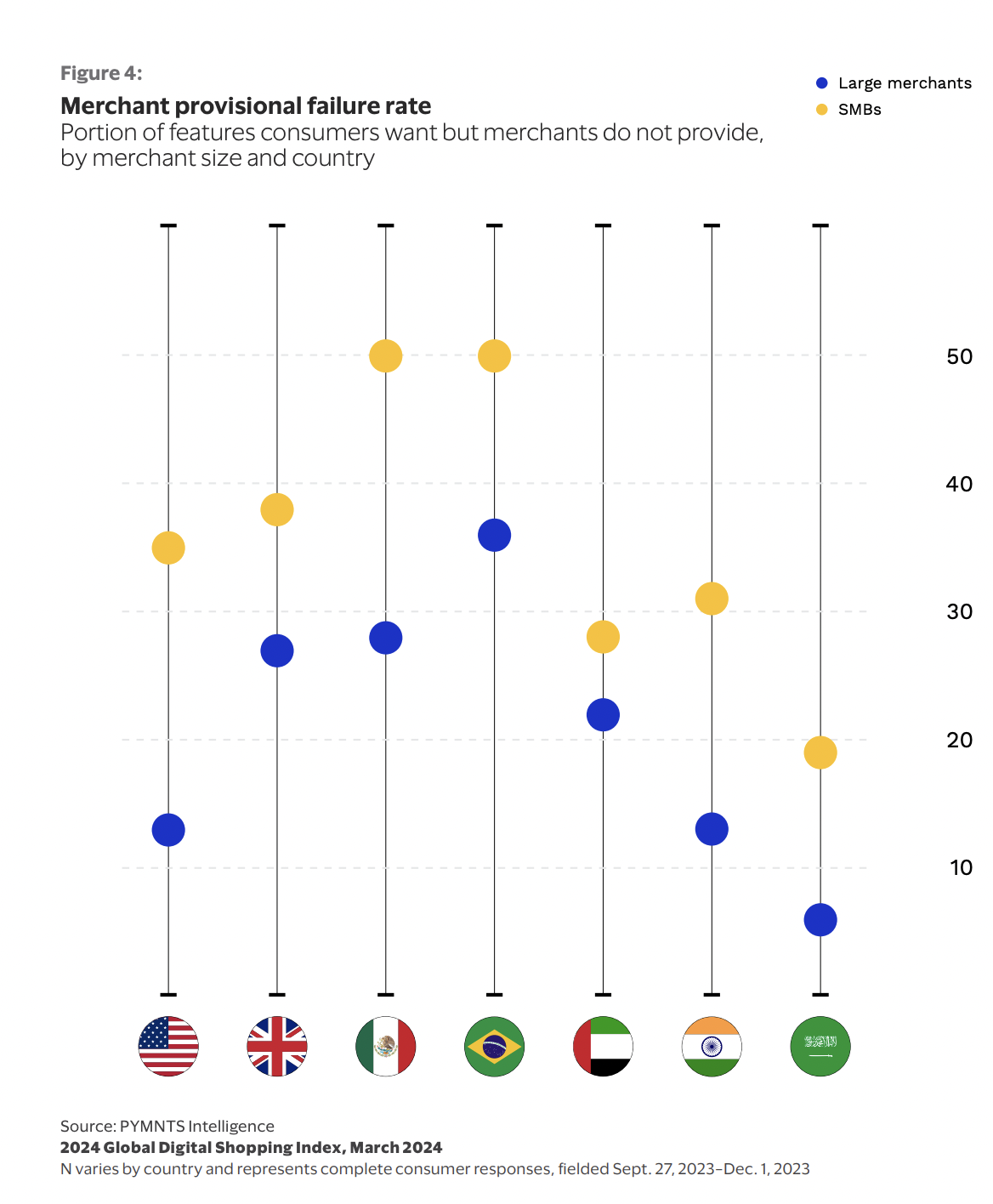
As consumers have grown to expect seamless digital convenience, many are finding that smaller merchants fall short of their expectations, PYMNTS Intelligence reveals.

The “2024 Global Digital Shopping Index: SMB Edition,” a PYMNTS Intelligence study commissioned by Visa Acceptance Solutions, drew from a survey of nearly 14,000 consumers and 3,500 merchants across seven countries in an effort to understand consumers’ omnichannel habits and sentiments across sales channels.
The study revealed that in the United States, “consumers miss 55% of desired features” at small- to medium-sized businesses (SMBs).
Digital features can be key to consumer loyalty, as reveal data from the PYMNTS Intelligence report “The Online Features Driving Consumers to Shop With Brands, Retailers or Marketplaces,” created in collaboration with Adobe. Fifty percent of consumers surveyed said that they consider how easy the checkout process is when selecting a digital merchant, the report noted, and 40% said the same of how easy to navigate the merchant’s online store is.
In a June interview with PYMNTS, Matthew Berk, CEO and co-founder of direct-to-consumer coffee brand Bean Box, explained that it is key to meet consumers’ high expectations for the seamlessness of their digital experiences.
“What we’ve learned is that when it comes to meeting the consumer … part of the equation is giving them a frictionless experience to buy,” Berk said. “That can be the website. They can purchase in an SMS message. They could purchase using our app. We try and make it really, really simple. … Those are the ways to really engage your customers and to continue building their lifetime value.”
Indeed, consumers are looking for the most convenient options.
“Apps and connected devices make [shopping] experiences seamless, secure and efficient. And unobtrusive,” PYMNTS’ Karen Webster observed in a feature last fall. “It takes three minutes between meetings to place an order on Instacart — it takes 60 minutes or more to drive to and from the store and shop.”